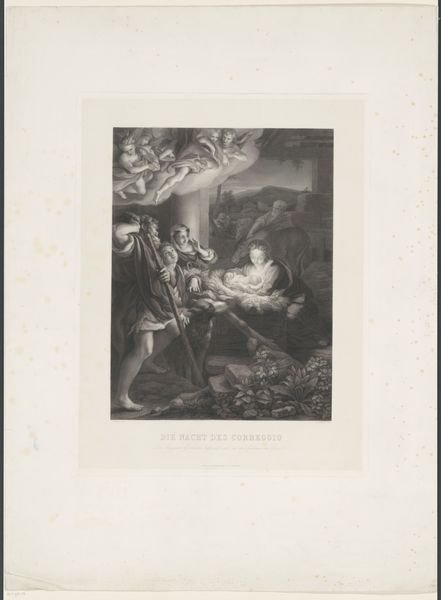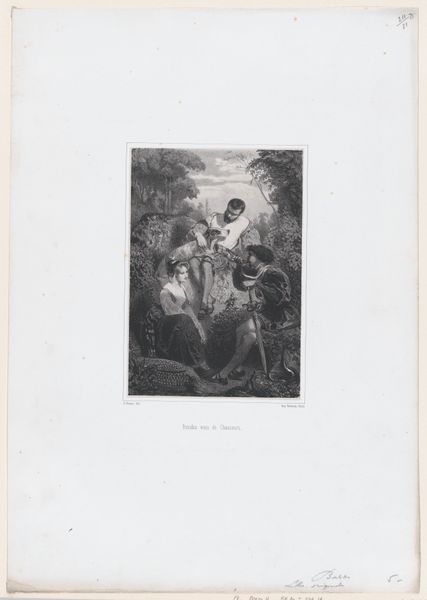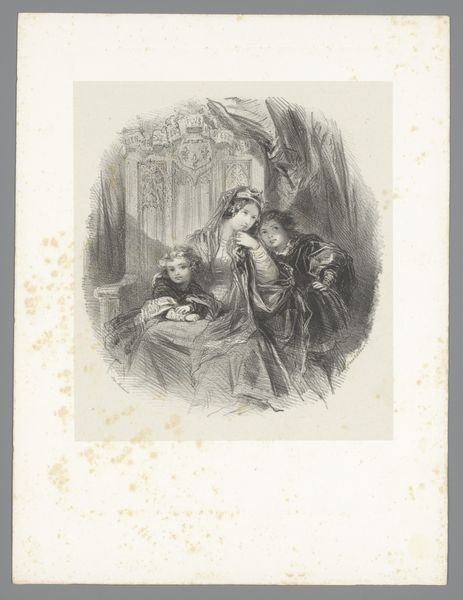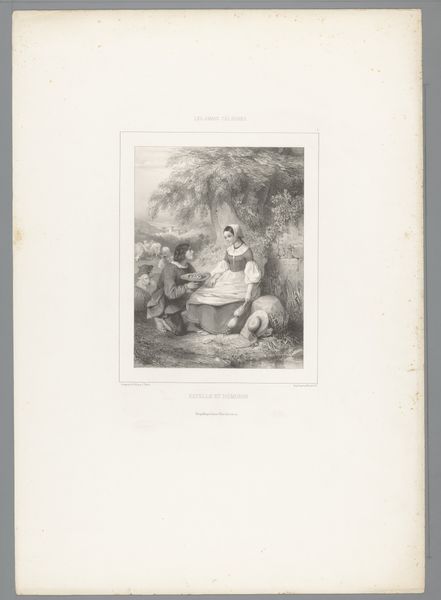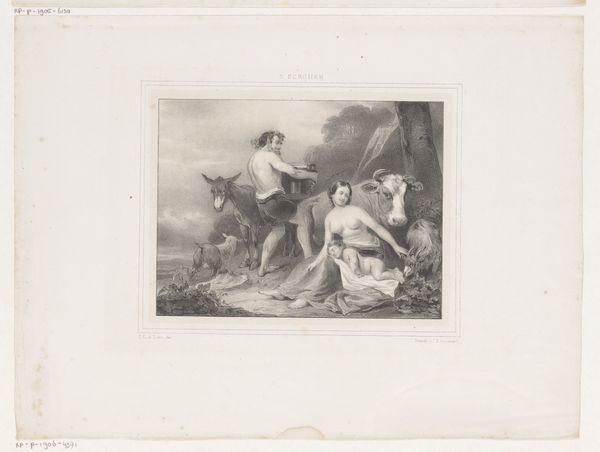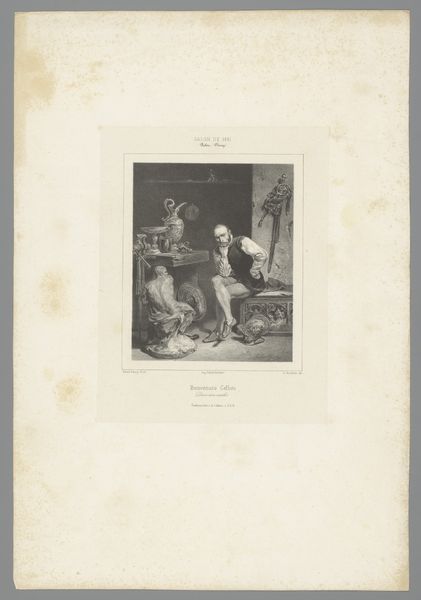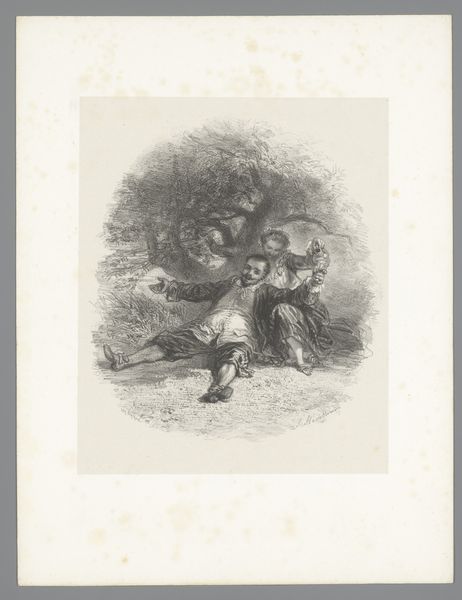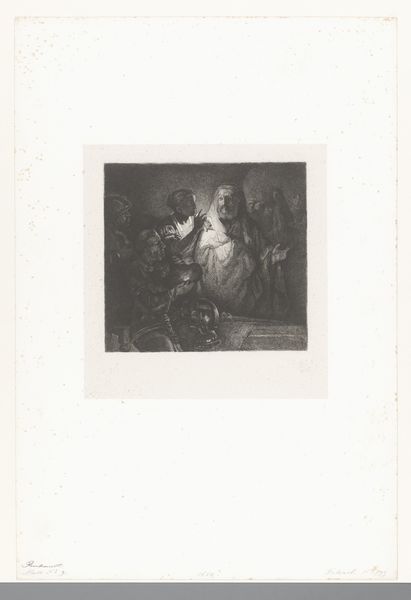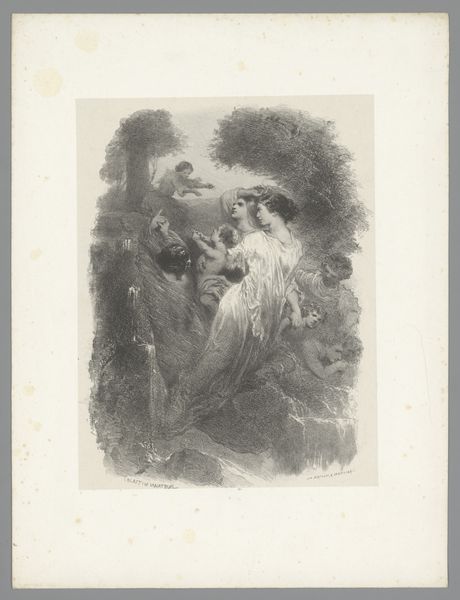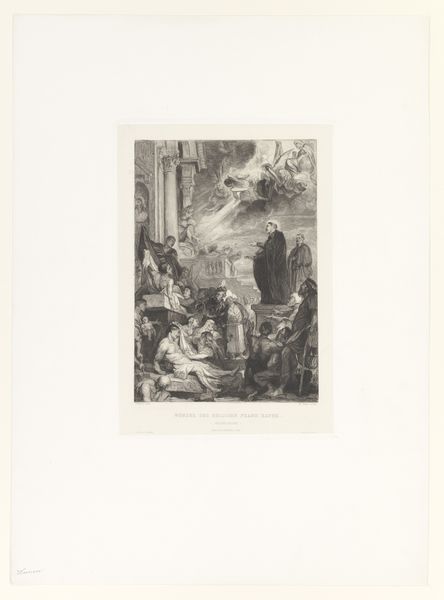
print, etching, engraving
# print
#
etching
#
figuration
#
genre-painting
#
engraving
#
realism
Dimensions: height 493 mm, width 320 mm
Copyright: Rijks Museum: Open Domain
Editor: Here we have "Twee duiven," or "Two Doves," an 1853 etching by Eugène Louis Pirodon. The texture in the doves' feathers is remarkable given it's a print, almost velvety! What stands out to you about this piece? Curator: Looking at this work, I'm struck by how the process of engraving and etching transforms our understanding of realism. Consider the labour involved: the careful scoring of the plate, the repetitive act of applying acid, the controlled hand needed to achieve such delicate gradations of tone. Editor: So you're seeing the labour reflected in the final image? Curator: Precisely. The subject matter, seemingly a simple genre scene, becomes a record of the artist's physical engagement with materials. Note the contrast between the smoothness the artist gives the doves compared to the coarse foliage in the background. Do you think that choice was simply aesthetic, or something more? Editor: I hadn’t considered that… maybe to elevate the doves in relation to the ‘rough’ backdrop? To highlight skill? Curator: Exactly. The print allows wider access and maybe lowers financial accessibility but increases consumption. Who do you think owned something like this in the 19th Century? What’s your reaction to that? Editor: Well, probably not everyone could afford artwork at all, so this seems geared towards those wanting a refined piece without the cost. It speaks to wider cultural values regarding artistic appreciation and consumption back then. Curator: Right. Examining it materially reveals how the pursuit of realism was very tied to a burgeoning culture of print media and mass consumption in the 19th century. Editor: This piece does more than depicting; it displays craftsmanship and offers an intimate glimpse into a different consumption context. I'll consider art with a greater attention to material conditions and accessibility.
Comments
No comments
Be the first to comment and join the conversation on the ultimate creative platform.

